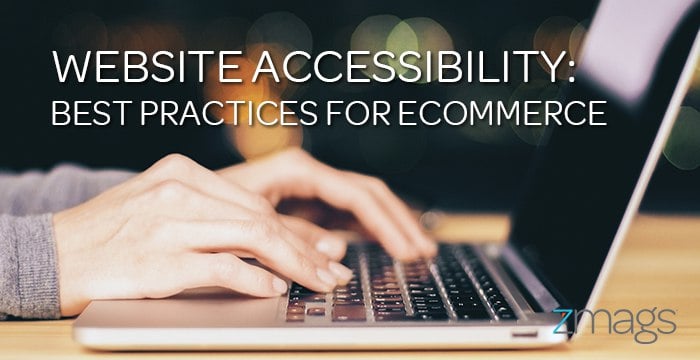Website Accessibility + The ADA


Sharing perspectives on the latest trends and tips to help eCommerce brands stay ahead to engage and drive revenue.
Is Your Web Content Truly Accessible to All?
Since 2015, over 300 lawsuits have been filed in violation of one giant, but frustratingly nebulous, concept: website accessibility. In the height of the digital commerce age, retailers must reexamine if they are catering to their entire user base:
- Can a visually impaired user access your content with a screen reader?
- Can they make online purchases too?
- Can deaf users easily understand your multimedia and video content?
Retailers have a moral obligation to ensure that their customers can – and face costly lawsuits if they can’t.
The Americans with Disabilities Act and eCommerce
The 1990 Americans with Disabilities Act states that it is unlawful to discriminate against the disabled in the full and equal enjoyment of goods, services, or accommodations of any place of public accommodation. Before the rise of the digital age, this was limited to brick-and-mortar businesses… but times have changed. Courts have recently declared a nexus between ecommerce websites and physical stores, meaning that anyone with an online presence is now considered subject to these same legal requirements. In 2006, Retail giant Target was one of the first companies to be sued over website accessibility. Target Corporation settled for $6 million, including an additional $20,000 to a nonprofit organization for the blind. (Not including the cost of litigation, or time spent in court!) Target also agreed to change their website to ensure that guests using screen reader software may access the same content and make the same purchases as sighted users. Other lawsuits include Priceline.com, Monster Worldwide Inc, H&R Block, and Sweetgreen.
Quick Tips for Website Accessibility
Website accessibility is clearly no longer optional; it is industry best practice. Want to make your web content more accessible? Here are some common ways to make your website and visual content available to all:- Add descriptive alt text on images and graphics for screen reader “translation”
- Edit website HTML markup to allow for keyboard navigation
- Increase the contrast in your web color palette
- Utilize large font sizes for the visually impaired
- Add captions to video content for the deaf and hard-of-hearing
By making these design and structural edits, retailers can ensure that any user, regardless of physical disability, can easily access both content and specific products.